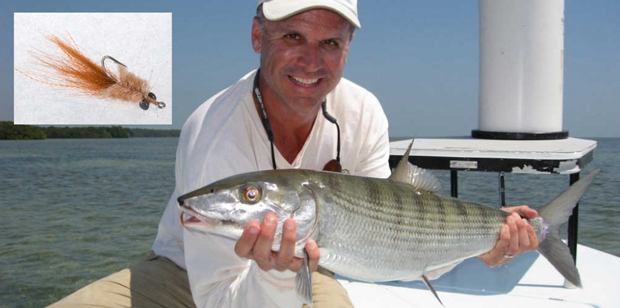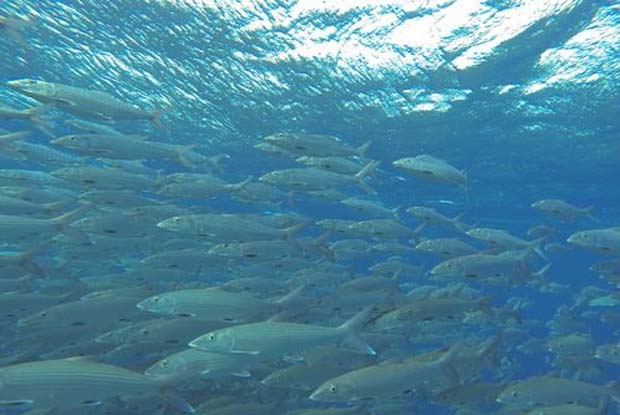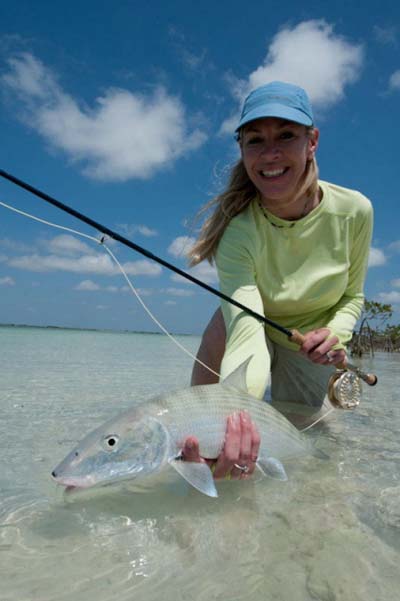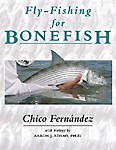Part II (Part I)
[dropcap]J[/dropcap]oan Wulff, one of the most famous ambassadors of our fly fishing sport wrote New Fly-Casting Techniques in 2012. In it she describes the life-cycle of a fly fishing addict. She says there are three distinct morphing stages. One, wanting to catch lots of fish; two, only big fish, and finally in a spinner-like stage where only a certain species provides the meridian. Bonefish are that zenith for lots of folks and for hundreds of reasons.
The final stage
This advanced stage manifests itself with the angler becoming a species biologist, tuned into tide and moon phases and developing a one-with understanding with regard to bonefish body language. The latter especially relevant in the spooky bonefish aggregations found in the Florida Keys.

Tim Mahaffey with an Islamorada double digit bone. Duane Baker’s crab fly (insert) reportedly travels well. It’s a big bone attractor and out-fishes in the Keys, Biscayne Bay, Bahamas, Belize, and Los Roques. Photo by Pat Ford.
Please, a good guide
Tournament caliber as well as bonefish experts like Sandy Moret, Tim Mahaffey, Stu Apte, Chico Fernandez and several guides in both the Florida Keys and Bahamas have opines on the matter of catching Mr. Bone that don’t always line up with regard to casting techniques, equipment preferences, rigging and fly choices. However, one thing is barbershop-quartet clear; go with a very, very experienced guide, and in many cases that was a guide saying that, especially if not fishing his own turf.
Fly rods
Another consistency was equipment. As that relates to rods and reels almost all interviewees personally use one stick manufacturer for their choices in all weights carried. Oddly, the weight preferences for bones wasn’t always the obvious 8- 9-weight. One Keys guide distinguishing himself by preferring a 6-weight when perusing bones. No one ventured “Back to the Future” with fiberglass or the other new rage – the switch rod.
The rationale for using just one rod manufacturer (model) is that if you go from 7- to an 9-weight, for example, the actions will be same. No need to adjust to a slower or faster action. For tournament anglers that translates to no lost seconds or a minute re-familiarizing with the action of a different rod action.
Consummate bonefish tournament winner Tim Mahaffey made a point about rods. “The choices for rods are mind boggling, and spending $850 isn’t necessary. Remember, most manufacturers’ second or third rated rod was their premium rod five years ago.”
Reels
Reels owned the same distinction – only one reel maker for all rod weights. Each, of course, preferential to different reel makers. And yes, some were using reels from manufacturers they represented. However, all owned durable, large arbor reels with sealed drags. Drags, it was collectively pointed out, need to be smooth since even a 3-pound bone will test your 12-pound tippet with their signature bursts. No one seemed interested in buying down-grade when it came to reels. They all agreed that a reel had to be built for a lifetime of hard living.
The “Kumbayah” of your rod and flyline are crucial
The choosing of a flyline along with leaders seemed to draw the most ideological fervor. The knowing of their importance telling.
A flyline is first-responder to a fly rod and anglers’ casting success – distance and accuracy the currency. If you were to ask any serious angler what is more important, the fly line or the rod? He or she would not hesitate with the answer. The flyline. The thinking there is you can adjust to a rod’s action, but if the flyline can’t shoot through the guides properly or in the wind, sink, float or carry a small, intermediate or big, bushy fly then you have an irreconcilable problem.
Factors to be considered when buying a flyline or flylines for bones
You’ll want a tropical line and prepare for windy conditions. Can the line pitch different size flies? And the toughest question to be answered: What is your skill level? Paying attention to the latter is important because the distance you can cast dictates the line you’ll need. That boils down to, basically, matching the line’s head length to your typical fishing distances.
The longer heads are best for long casts, but that comes with a caveat – more false casts.
Leaders
The subject of leaders can erupt into a jihad – so to avoid backlash, here’s a short comment about that by bonefish Guru Chico Fernandez, titled The Right Material:
“I feel strongly about the use of standard-flex leader material. Very stiff material produces terrible knots, and the fly will not swim naturally. Very supple material gives you little turnover power and more wind-knots. You definitely want a compromise between the two. Many manufacturers offer appropriate monofilaments.
There is an alternative to all this, and that is knotless leaders like the ones you may use in fresh water. While they have improved in the last few years, they are still too soft for me, particularly in the warm environments where we find bonefish. And the butt sections are usually too short, especially once you have used part of it to tie to the fly line. When you have changed flies a few times or broken a tippet on a fish, you have to add tippet material to your knotless leader; if you know how to tie a blood-knot to repair a leader, then you know how to build one from scratch, with good material.”
NOTE: Fly-Fishing for Bonefish Hardcover – by C (Contributor). July 16, 2004
[information]
Here’s a good and recent reference article about analyzing statistics to determine catch rates in past Keys bonefish tournaments – by Mike Larkin . . .
[/information]




